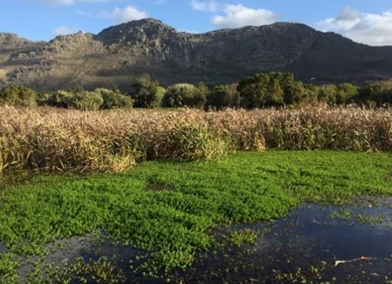The soil legacy effects of invasive nitrogen fixing woody species can present several barriers to the restoration of native plant communities. This was the finding of a recent review paper by C·I·B PhD student, Mlungele Nsikani, and C·I·B Core Team Members, Brian van Wilgen and Mirijam Gaertner, in the journal Restoration Ecology.
Legacy effects are a type of effect where changes in biological, soil chemistry or physical conditions can be seen even after removal of the invader. For example, changes in the soil microbial composition can be a legacy effect after clearing invasive nitrogen fixing woody species, such as Acacias. These changes become a barrier to restoration by limiting the germination, and/or growth of native plant species.
Numerous studies have described individual legacy effects of nitrogen fixing invasive woody species, how they can present barriers to restoration of native plant species and how these barriers can be managed. However, restoration ecologists still lack a broad review of all these aspects despite their consideration being crucial to improving restoration efforts. To address this, Mlungele and colleagues, reviewed 440 scientific papers to identify barriers to restoration presented by soil legacy effects and potential management actions to improve restoration.
The literature review highlighted the need for restoration ecologists to investigate all potential barriers to restoration during restoration programs. Furthermore, given that they are appropriate in their context, restoration ecologists would benefit by applying the management actions included in this review. For example, restoration ecologists could apply soil microbial treatments to manage changes in the soil microbial composition.
Restoration ecologists are encouraged to write-up and publish their results (even if they are negative) after investigating potential barriers and/or applying management actions identified in this review. To improve restoration efforts, management actions should be combined into an integrated management effort instead of being applied individually.
“Barriers to restoration arising from soil legacy effects will most likely have to be tackled during restoration programs,” said Mlungele, “if we are to entertain any hope of success in restoring native plant communities in previously invaded areas”.
Read the paper in Restoration Ecology
For more information, contact Mlungele Nsikani at mlungele@sun.ac.za




